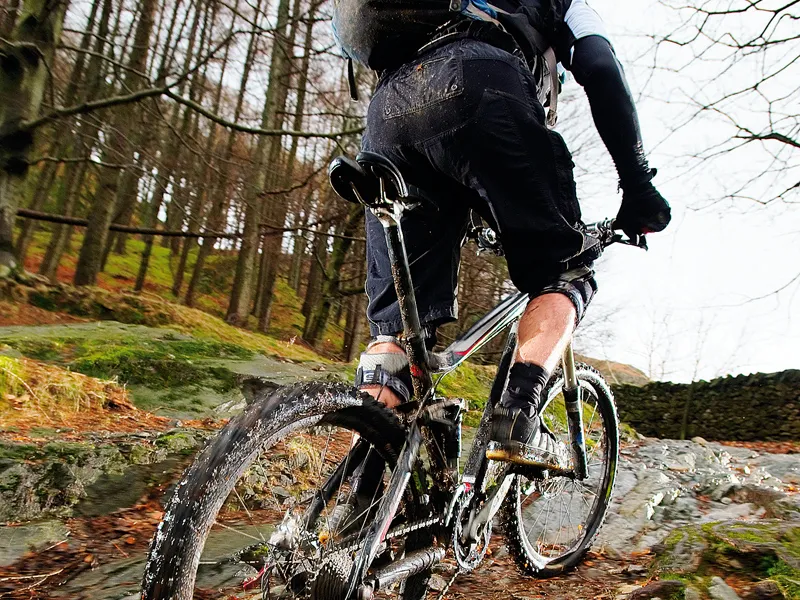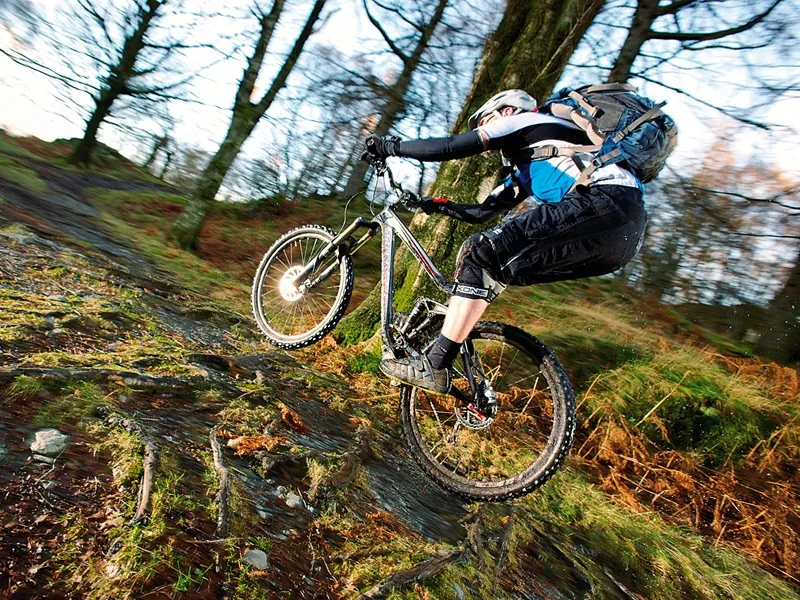Most of the challenge of winter riding is in overcoming a lack of grip. All that rain makes things a bit slippery, whether the trail is muddy, rocky or rooty. And cold, clear days aren’t necessarily any better, because ice and snow bring their own problems.
You need grip to propel the bike forward, change direction and stop when you need to, and a sliding tyre interferes with all of these bike riding fundamentals.
You won’t be able to keep your tyres gripping all the time, and coping with a sliding bike is part of the skill of good winter riding. But keeping your wheels turning and pointed where you want them to go is the goal you’re aiming towards. Here’s how:
Move that arse
Weight distribution on most mountain bikes is biased towards the rear. That’s good, because the rear wheel needs more grip to convert your efforts at the pedal coalface into forward motion.
But when things get really slimy, you may need to shift your weight even further back to help the rear tyre dig through to firmer ground, and then be ready to move it forward again, fast, to give the front tyre some traction. Weight shifts are the key to maintaining traction in the slime.
Engage your brain
There’s no doubt that persuading a pair of 2in-wide tyres to cut through inches of mulch and mud is hard work, but brute power isn’t always best. Remember, we’re aiming to keep the wheels gripping and moving the bike forwards, and winter conditions mean that the tyres will often have less grip than normal.

You’re already using your body’s mass to maximise traction, but your brain can help too, by scanning the trail ahead in search of the best (grippiest) lines and making sure that the effort you’re putting into pedalling is well matched to the conditions beneath your tyres.
It sounds like a lot to concentrate on but by planning ahead and reacting quickly — backing off the gas, for example, when you feel the rear tyre start to spin — you can maximise your progress and minimise the chance of an unscheduled bailout.
Wet rocks
Here’s the odd thing about rocks: some of them have plenty of grip, even when they’re wet (sandstone and gritstone, for example) and others have all the tractability of a skating rink (stand up and take a bow, please, limestone). But unless you’re a geologist and can identify a rock from 100 paces, you’re best off assuming that they’re all slippery little blighters in winter.

For smaller rocks, try to stay off the brakes — especially the front — and stay loose over the bike, allowing it to skip sideways if that’s what it wants to do. Perversely, speed can be your friend in this situation, skimming your wheels over the tops and getting you out of trouble before you can get into it.
Bigger rocks need a more circumspect approach. The same basic principle applies — keep your body loose and lay off the front brake — but scrub off your speed before you get there and keep your wheels away from any off-camber nastiness. Hold your nerve, let it roll, and you’ll be fine.
Wet roots
Unlike rocks, roots are always slippery, especially when they’ve been polished by many tyres. There are only two ways to deal with wet roots. The first is to avoid any wheel contact at all, lofting both wheels over the offending obstacle at a speed that’s appropriate to the trail conditions and your skills. This is the only way to cross roots at an angle.
The second is to turn in advance so that you ride over the roots at 90 degrees to them, keeping loose over the bike and unweighting the wheels slightly as they roll over.

